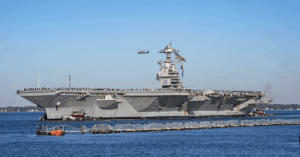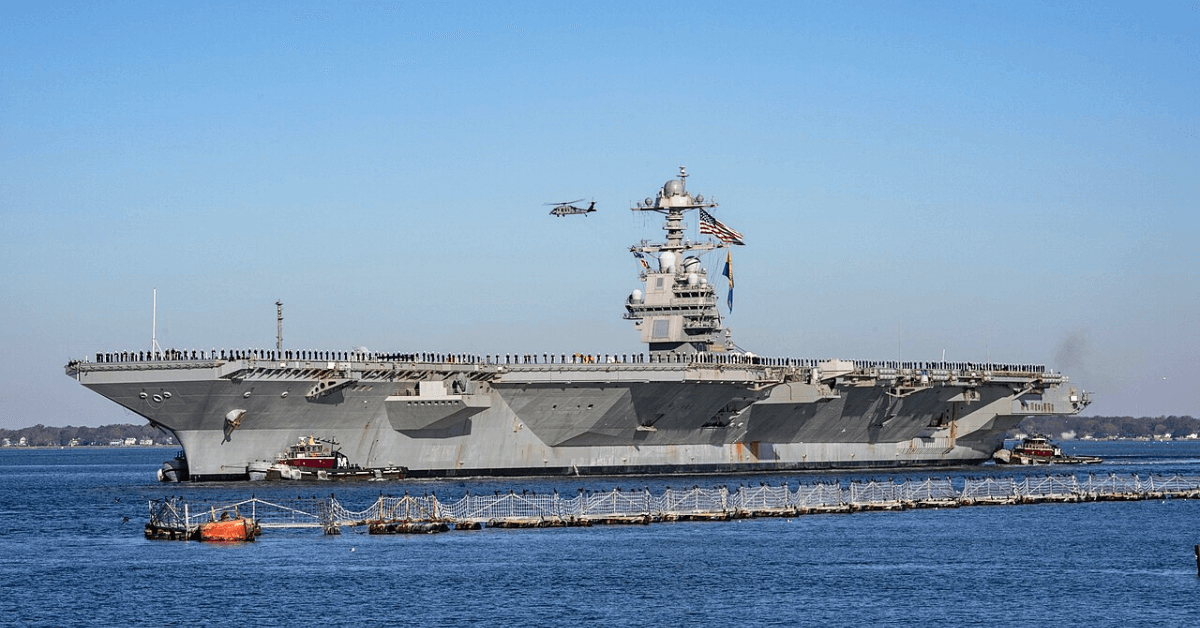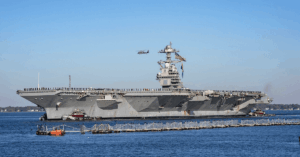
Wärtsilä To Power USA’s First Fully Electric High-Speed Ferries in San Francisco Bay
May 29, 2025
Japan’s Largest Cruise Ship, ASUKA III, Completes Its First LNG Bunkering
May 30, 2025

The US Navy is launching its largest-ever fatigue study by equipping 1,600 sailors aboard the aircraft carrier USS Gerald R. Ford and its strike group with Oura Rings—tiny, high-tech health trackers designed to monitor sleep and stress levels during long deployments. This effort aims to improve crew safety and performance.
The Oura Ring is a small titanium device that tracks heart rate, body temperature, blood oxygen level, movement and most importantly, sleep patterns. The collected data will be securely and anonymously uploaded through the Starlink internet now installed aboard deployed Navy vessels. This will allow commanders to monitor fatigue levels across units and make operational changes if needed.
According to researchers, this new approach is aimed at preventing serious incidents caused by exhaustion. They explained that fatigue has repeatedly played a role in dangerous and even deadly accidents aboard Navy ships.
The initiative is part of the Navy’s Command Readiness, Endurance, and Watchstanding (CREW) program, led by the Naval Health Research Center. It follows a series of tragic incidents.
In 2017, 17 sailors died in two separate collisions involving destroyers USS Fitzgerald amd USS John S. McCain. In June that year, USS Fitzgerald collided with container ship ACX Crystal, killing seven sailors. Just two months later, USS John S. McCain crashed into oil tanker Alnic MC near Singapore, resulting in the deaths of ten more crew members.
Investigations into both accidents pointed to crew fatigue as a major factor. Watchstanders on Fitzgerald had “little to no sleep” the night before the crash, while logs from McCain showed that the bridge team had less than five hours of rest in the previous 24 hours, with at least one person getting no sleep at all.
Despite some improvements to watch schedules made in the years since, a 2021 Government Accountability Office (GAO) report criticised the Navy for failing to fully implement a system to collect quality fatigue data. The report urged the military to track sleep in real time to prevent future mishaps, but progress has been slow.
The CREW program, which began testing wearable devices in 2021, has faced challenges in securing long-term funding. Dr. John Cordle, a human factors engineer working with the Navy, said there is no formal program of record or dedicated sponsor for the effort.
Until now, the work has been backed by the Office of Naval Research, but it remains uncertain whether it will receive the support it needs to expand across the fleet.
Cordle pointed out that the Oura Rings were chosen in part because they are passive devices that don’t emit GPS signals, which improves operational security. He referred to the Strava app incident in 2018, when GPS data from fitness trackers accidentally revealed military base locations worldwide.
To avoid such risks, the Navy chose tech that does not transmit location data and is only connected to a phone via Bluetooth when needed.
Researchers stated that the rings allow individual sailors to monitor their own health and readiness, not just provide data to their commanders. They see it as a self-management tool that could empower service members to take better care of themselves during stressful deployments.
Participation in the study is voluntary, but sailors who wear the ring for more than 75% of the deployment will be allowed to keep the $200 device. Those who don’t meet the threshold will need to return the ring but won’t be penalised.
The Oura Ring tracks up to 20 different biometric indicators, and researchers hope the benefits will be clear to both leadership and the crew. Dr. Rachel Markwald, a senior sleep physiologist at the Naval Health Research Center and CREW’s implementation lead, explained that the data will help leaders understand how missions are affecting their teams’ recovery and readiness.
She stated that most people understand sleep is crucial for maintaining performance and health. Without access to real-time data, the Navy is left guessing how rested or exhausted its sailors are.
According to Cordle, several recent incidents also occurred late at night or early in the morning, times when sleep deprivation is often a factor.
For example, in February 2024, the aircraft carrier USS Harry S. Truman collided with a Panama-flagged merchant ship near the Suez Canal, and in May 2024, two Landing Craft Air Cushion (LCAC) vessels crashed off the coast of Jacksonville, Florida. Both incidents happened between 11 p.m. and 7 a.m., but official investigation reports have not yet been released.
Researchers acknowledge that scaling up the CREW program won’t be easy. Questions remain about whether sailors could eventually be required to wear these devices, and what kind of infrastructure ships would need to securely upload data locally without relying on cloud services that could pose a privacy risk.
Still, the team behind the study believes that with the USS Gerald R. Ford Carrier Strike Group now participating, the Navy will see firsthand how powerful biometric tracking can be in preventing dangerous levels of fatigue.
Markwald said the goal isn’t just to catch problems before they happen, it’s also to give sailors more control over their well-being.
Reference: militarytimes
Source: Maritime Shipping News


